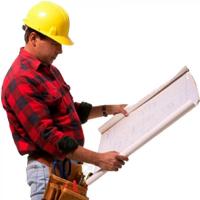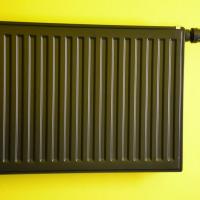Simple Steps to Replace an Old Radiator
by Stephen Davies on Feb 15, 2019
If your home isn’t being heated efficiently, it may be time to replace the radiator. Old, corroded radiators use more energy than newer, more energy-efficient models. Some homeowners even choose to change their radiator for a more aesthetically pleasing one. No matter the reason you want to replace an old radiator
1. Preparation
Check the walls and masonry surrounding the radiator. Look for signs of damage, including crumbling brick or cracks. If damage is noted, now is the best time to remedy it before installing a new radiator.
If the radiator is to be installed on plasterboard, be sure to find the studs beforehand. Use a stud detector, available at home improvement stores, to do this. The new radiator needs to be attached to these studs, as they are the strongest part of the wall.
2. Empty the Old Radiator
The radiator needs to be fully emptied before removing it. Shut off the heater and close off the valves on the radiator. It’s wise to count how many turns it takes to close the valves so that you can easily adjust the new radiator to the same flow rate. Loosen the cap nuts with a spanner. A pan should be placed under the radiator to catch any water as it drains. Open the bleed valve with a bleeding key. Clean all the threads with wire wool.
3. Remove the Radiator
Lift the radiator to remove it from the wall. There may be some residual water inside, so be sure to carefully pour it out. Clean the wall before installing the new radiator. If you’re planning on reusing the brackets, make sure they are also clean and secure.
4. Install the New Radiator
If the new radiator is the same size as the old one, you may be able to save money by using the same brackets. However, if you want to update the brackets, simply unscrew them and place the new brackets in their place. Hang the new radiator on the brackets.
5. Connect the Valves
Make sure the valves fit properly into the new radiator. Always clean the threads first and wrap them with PTFE tape to ensure a proper seal. Connect all the valves and open them to fill the radiator. Always bleed the radiator to ensure there is no air in the system. It may be necessary to adjust the pressure.
After the system has been refilled, be sure to check for any leaks. If leaks are noted, they are most likely due to an improper valve seal. Drain the system and add more PTFE tape around the valves. Never reinstall any floorboards until you’re certain the radiator isn’t leaking.
6. Add Corrosion Inhibitor
Corrosion inhibitor, also called central heating protector, is always recommended. Flush the entire system and add the corrosion inhibitor according to the manufacturer’s specifications. This will help to prevent rust and sludge from building up in the system. Even if your system was treated with a corrosion inhibitor, replacing the radiator will cause you to lose some of the treatment. Most homeowners choose to add the corrosion inhibitor now, although it can be added later.
When replacing a radiator, be sure to take your time and pay attention to even the smallest details. Gather all the supplies and tools you will need beforehand. This easy project only takes a few hours to complete.
Popular Articles
Three Places to Spend Money on the Exterior of Your Home
When you have the exterior of your home remodeled, you are investing, time, energy and convenience into the project and you want to make sure that...
100994 Views
Homemade Headboards-Make an Upholstered or Wooden Headboard
Homemade headboards can add a lot of personality to any bedroom. They can be coordinated with existing furniture and room decor or they can be the...
76606 Views
When to Use a Brush, Roller or Sponge Brush
Brushes are a good choice for painting trim and woodwork. They are also useful for cutting in the edges around the top and bottom edges and corners...
72559 Views
Creating a Cottage Kitchen with Bead Board
Kitchen decor can range from modern and bold to elegant and elaborate by using strategic kitchen pieces. One of the most popular decorating trends...
55039 Views
Gas Fireplace Diagnostics and Troubleshooting
Follow these steps for diagnosing and troubleshooting Gas Fireplaces repairs. For the average DIYer, this may seem intimidating, depending on the...
32161 Views
Latest Articles
How Much Does it Cost to Take a Bath?
Plumbers know that a bath may seem like a relaxing luxury, but the real cost extends far beyond your water bill. The average soak uses 35 to 50...
on Apr 8, 2025
10 Concrete Patio Ideas on a Budget
A concrete patio can be a game-changer for your outdoor space. It is durable, versatile, and can be customized to fit your style. But what if you...
on Mar 25, 2025
Tips for Creating a Stunning Personalized Photo on Canvas
Order the unique beauty of a personalized photo on canvas and bring your memories to life. With a customized photo on canvas, you can transform...
on Mar 7, 2025
Best Areas to Buy Property in Singapore for Long-Term Growth
Singapore's real estate market remains one of the most stable and lucrative in the world. With limited land supply, strong governmental...
on Feb 18, 2025
Troubleshooting Excess Water in Your HVAC Secondary Condensate Drain Pan
When maintaining your air conditioning system, it is easy to overlook the condensate drain pan - until excess water starts pooling in places where...
on Jan 12, 2025
Featured Articles
What Type of Licensed Contractor Should You Hire?
on Feb 28, 2017
Hire Contractors / Estimates

Looking for a specialty project? There are many types of contractors available for your home improvement needs. Finding the right type of...
Sponsored Articles
Best Areas to Buy Property in Singapore for Long-Term Growth
on Feb 18, 2025
Real Estate / Finance

Singapore's real estate market remains one of the most stable and lucrative in the world. With limited land supply, strong governmental...
Actions
Top Categories
- Garden / Landscaping / Patio — 264
- Kitchen / Bathrooms — 240
- Real Estate / Finance — 203
- Appliance / Repair — 186
- Interior Design / Decor — 184
- HVAC / Air Conditioning — 148
- Cleaning / Maintenance — 144
- Improvements / Remodeling — 131
- Plumbing / Basements — 118
- Floors / Tile / Hardwood — 116
- Doors / Garages — 113
- Safety / Security — 113
Articles Archive
More DIY Articles
Georgia Local Builders Associations
Find a local builder or council, please contact the home builders' association (HBA) in your area.
5 Basic Home Improvement Tasks You Can Do Yourself
Are you stuck at home during COVID-19? Is money running low but you still have home improvement tasks that need to be done? Fear not, as with the...
Replacing Small Heating Appliance Plugs
Steps on replacing older heating small appliances. Depending on how old the appliance is, you may be better off replacing the unit, rather than...
Manual Key Machines: What Are Your Options?
An essential part of locksmithing, manual key machines form the bread and butter of many businesses. But with so many options available on the...
Should I Add-On to My Existing Home or Buy a New One?
As families grow, space becomes more important in a lot of situations. The most common response by a homeowner would be to consider putting in...

